There’s Much More to Cuba Than Cigars and Vintage Cars
The country’s most celebrated blogger discovers her homeland anew while working as a tour guide
/https://tf-cmsv2-smithsonianmag-media.s3.amazonaws.com/filer/2b/2d/2b2d3a28-1d78-4dc3-939e-307255220466/sqj_1610_cuba_essay_01.jpg)
On turning 20, I decided to earn my living as a hybrid Spanish teacher and tour guide. I had in my favor a certain knowledge of grammar and a history of long walks through Havana that had brought me to places and stories the travel books don’t mention. I looked forward to teaching foreigners about Cuba while also providing them the language skills to explore on their own. From my very first student, however—as I taught verb conjugations and introduced unknown and unusual sights—I knew this work would also enable me to rediscover my own country.
The gaze of the stranger, who comes from afar and peers into a new reality, sees details that are imperceptible to those of us who grew up in the midst of it. My country was so familiar to me that I no longer saw it. I had become blind to its decadent beauty and to the singularity of a capital city looking much as it did in the mid-20th century.
It was only when my students, most of them German, asked questions that I began to wonder why a lovely art deco building was in such a state of decay—a blend of ruin and splendor, architectural perfection and seemingly inevitable decline. Or why such a big city had so little commercial activity. The 1968 Revolutionary Offensive had done away with most remaining private enterprise—down to the last shoeshine kit—but that had happened before I was born. When my students asked where we could stop for coffee or a snack, or where they might buy something small they had forgotten to pack, I had little to recommend, and my perception changed.
For a dozen years I answered the same questions. I explained that the ceiba tree near Havana Bay was planted to mark the site where the current Cuban capital was founded in 1519. Even today, at the age of 41, I cannot pass this symbolic place without remembering the lines I repeated daily—that it was only after previous attempts to settle the island had failed, on both the southern and northern coasts, that seafaring Spaniards founded the Cuban village that would grow into today’s capital, naming it San Cristóbal de la Habana.
My students hungered for historical details—the colorful personalities, the stories of frequent pirate attacks, the landmarks of a city whose historic center was declared a UNESCO World Heritage site in 1982. But they were just as interested in the present: the daily struggles that took place behind the crumbling city walls. I didn’t want to show them a sepia postcard—the Cuba of famous cigars and vintage cars—but rather a contradictory and complex country populated by people with real dreams and challenges.
My specialty as an informal guide (whose second language was German) was to show them that other side, the deep Cuba that is not addressed in guidebooks. So I took my restless students to one of the city’s ubiquitous ration stores, part of a “temporary system” created in 1962 and still operating today (though less pervasively). I explained Cuba’s long experience with shortages, the black market, and the “booklet” we’ve carried for more than 54 years, which regulates the government’s distribution of subsidized food. I explained the nature of my own work, technically not legal but part of a huge informal economy that puts food on our tables.
We have a verb for it: to resolve. “To resolve” is to coil a hose under your shirt to sneak alcohol out of the distillery. Or to add extra yeast at the bakery so bread dough rises disproportionately high, and spared flour can be sold on the black market. Taxi drivers “resolve” by fiddling with the meter; farmers add a few small stones to each bag of beans; teachers, in a profession with little or nothing to take home, sell answers to their tests.
“My mother grew up with the ration book; I was born with the ration book; and my son, Teo, was born with it as well,” I told my German students, who were bewildered by the little chalkboards listing what was available: rice, beans, sugar, a little oil, and other monthly rations too meager to survive on for even a week.
“So then how do Cubans eat?” one of the visitors invariably asked.
“We are specialists in finding everything that is censored, prohibited, and rationed,” I explained, with the impish smile of one who has dipped into the black market to buy everything from eggs to forbidden beef. (If someone is caught selling the longed-for hamburger or stew meat, he or she can spend time in prison.)
As a guide to Cuba’s depths, I never missed taking my students to Playita 16, a little beach west of the capital—a place the Cuban hippie movement made its own in the ’70s, and whose rocks have witnessed the tightest jeans and longest manes in the country. This place of salt air and intense blue sky was a favored location for the hundreds of disillusioned people who climbed aboard ramshackle rafts in the summer of 1994, hoping to escape the country during the Cuban Rafter Crisis.
A short distance from that beach rises the Russian Embassy, previously the embassy of the Soviet Union, a mass of concrete with the strange shape of a sword stuck in the heart of Havana. Cubans sardonically refer to it as “the control tower,” not only because its structure resembles those found next to airport runways, but because of the long years the Kremlin maintained its grip over our country.
Not much is left in Cuba of those days of Soviet “comrades” and the hammer-and-sickle flag. Some Cubans, mostly those over 40, carry names like Vladimir, Boris, or Nadezhda, but no one makes borscht soup for their families, and Mickey Mouse has long since won the battle over Misha the Bear. The area around the Russian Embassy sees hardly any pedestrian traffic, though the grim gaze of the guards remains fixed.
A very different scene plays out a few miles away, in a small park across from a seaside building surrounded by tall fences. On December 17, 2014, after more than a half century of ruptured relations, Presidents Barack Obama and Raúl Castro ventured toward a thaw when they announced the reestablishment of diplomatic ties. Six months later the heavily secured building ceased to be the United States Interests Section and again became the U.S. Embassy. Now the area outside fills with people who dream of obtaining a visa to visit or emigrate to the country that official propaganda has long deemed “the enemy.”
Clothes bearing the stars and stripes are quite the fashion. In the informal market for entertainment—previously fed by illegal satellite dishes, the discovery of which could bring confiscation, large fines, even prison time—the highest demand is for Hollywood and Netflix productions. These now arrive by way of the “weekly packet,” as it’s known in popular parlance—a compendium of movies, TV shows, and digital downloads that passes hand to hand on flash drives and other devices, stealing viewers from the lackluster programming on state TV. Like so many other things in Cuba, the packet is illegal yet tolerated.
The new devices make the flow of information easier, but it’s always been hard to impede: In the ’90s, my students would ask me how we managed to learn so much about the world, even when the national press—entirely in the hands of the Communist Party—was so stifling. I described to them “Radio Bemba”—literally “big lips radio”—the oral transmission of forbidden news, from the ousting of senior political figures in our own country to the fall of the Berlin Wall on the other side of the world. “We are specialists in finding everything that is censored, prohibited, or rationed,” I repeated.
As time and interest allowed, I also escorted my students to another Cuba, one that exists beyond the confines of the capital city.
My father was a locomotive engineer, so my earliest years were marked by the rhythm of clattering train cars, the whistle blowing in every village we passed through. From the train windows during those childhood trips, I looked out over the Cuban countryside, tranquil and uncluttered, as if time itself had passed it by.
Not much had changed two or three decades later. Occasionally, at a crossroads, a farmer would be driving a rickety horse-drawn cart the locals call “spiders,” perhaps because they travel a fragile web of roads, trails, and narrow paths that run between fields and connect the towns, villages, and bateyes—as the settlements of sugar workers are called. Furrows of tobacco, beans, and garlic reminded me of fields I harvested as a teenager, when I attended now abandoned “schools in the countryside”—intended to complete our transformation into socialism’s “New Man.”
In the middle of nowhere, there was often a sugar mill. Some still worked, but others had been abandoned, their rusted bits and pieces orange in the sun. In 2002 the Cuban government launched a plan to reuse the sugar mill engines. Of 156 of these important installations across the country, almost a third were inactive. The government converted some into noodle factories and others into workshops for the repair of home appliances.
Cuba, the so-called sugar capital of the world, has seen production collapse in recent years. The harvest that ended in May this year barely reached 1.6 million metric tons of raw sugar, less than the previous year’s 1.9 million and a far cry from the 8.5 million officially achieved in 1970. (The long decline since the failure of that year’s highly touted “Ten Million Ton Harvest” is a complex story, combining the vagaries of the world market and a planned economy beset by incompetence and corruption.)
Traveling along the rural roads—a journey made by horse-drawn carts—was a highlight for my students, who were eager to immerse themselves in a less touristy Cuba. So we traveled together to the Escambray Mountains, which rise from the southern coast over the city of Trinidad. In normal years, heavy rains nourish this area, which becomes a lush, high-altitude jungle filled with ferns and bromeliads. In the Topes de Collantes nature reserve, Cuba’s national flower, the mariposa (butterfly), blooms on all sides, and the Caburní waterfall drops 200 feet into a series of linked pools. It’s a magical place. In the evenings, we saw the stars in all their intense luminosity; at dawn, we woke to the crowing of roosters.
In deepest Cuba, such places remain almost virgin. People live in bohíos—thatched-roof huts made of palm boards. Cuban guajiros (farmers) still make coffee in a cloth sieve and go to bed with their chickens. Reality here contrasts sharply with the unrestrained cacophony presented by the island’s tourist advertising, which conveys the false idea that we are a people immersed in endless revelry, laughter, and carnivals.
Life in the countryside is hard. Power outages are frequent, modern conveniences are few, and transportation is often by foot, bicycle, or horse. Farm work, largely by hand or powered by animals, takes a physical toll. Many young people prefer to migrate to nearby cities or farther afield. Of the thousands of Cubans who crowd the border crossings of Central America, eager to reach the United States, many come from these beautiful, tiny towns devoid of opportunity.
In one of these small settlements—known as El Pedrero, near the town of Fomento—a young woman from Frankfurt and I joined a family of farmers for lunch. With the menu enlarged by the farm’s own produce, we enjoyed generous and varied offerings: black beans and rice, a freshly sacrificed pig, and a tomato-and-avocado salad dressed with oil, vinegar, and salt. Boiled yuca with garlic sauce sat in a glass dish atop a table made from unpolished tree trunks. This delicious root, often called cassava in English, is very common in the diet of Cuban farmers. When Christopher Columbus came to the island, the natives were already using it to make a crusty and very thin bread still enjoyed today, especially on the plains of Camagüey.
After lunch came the siesta, a Spanish custom still practiced by many elderly farmers. The head of the house rocked in his hammock on the porch, while the dogs collapsed near the door to ensure that no strangers passed unnoticed. Modern farm implements and supplies were nowhere in sight, and the invasive marabou weed—a common plague throughout the country—had overtaken untilled land around the house.
The scene helped me explain the effects of excessive state control and bureaucracy, particularly food shortages. Many products are rarely, if ever, available in the rationed markets, and when they can be found in the unrationed agromercados—where supply and demand prevail—their prices are often well beyond the reach of the average worker, whose earnings (beyond what he or she gets in subsidies) don’t exceed the equivalent of $20 a month.
A farmer might slaughter his or her own pig, but a Cuban worker needs more than a day’s wages to buy one pound of pork. And one of our most beloved fruits, the pineapple, has become a one-dollar status symbol that only the richest families can afford.
For tourists, however, the prices of a mamey, guanábana (soursop), or cherimoya (custard apple) are unimaginably low. Travelers from Berlin, Bonn, or Munich looking at the market stalls filled with the striking colors of mangoes or the provocative image of a fruta bomba—Cubans reserve the commonly used term “papaya” as slang for a woman’s sexual organs—cannot believe that a pound of lemons costs less than a half-dollar, not understanding that this is nearly a half-day’s wages for a Cuban engineer.
When we’d arrive in Santiago de Cuba, we’d experience the city as a blast of heat and color. My students loved this Caribbean port, where people are more hospitable than in populous Havana, and where life proceeds with less bustle. We would stay in private homes rather than hotels. Family life—waking up to milk bubbling on the stove and the smell of woodsmoke from the cooking fire—was one of the highlights of each trip.
After sleeping a night in Santiago, we’d follow the obligatory path to the Shrine of Our Lady of Charity of El Cobre, Cuba’s patron saint, who is syncretized with the Orisha Oshún in Santería, a religion with African origins. Pilgrims from all over the country bring their prayers and their offerings to the shrine. Baby booties are offered to the saint by a family hoping for a child’s health to improve; miniature wooden houses are given in thanks because Cachita—as she is popularly known—helped someone achieve home ownership; relatives bring tiny boats to fulfill the vows of those who have managed to leave the country.
Under an imposing dome, dozens of pilgrims gaze on the small wooden statue of the Virgin, which was mysteriously—or miraculously—found bobbing on the Bay of Nipe in 1612. Standing before her, Cubans are equal: We put aside ideologies, class differences, and the rigors and disputes of everyday life. In front of Cachita, deepest Cuba and the more visible Cuba come together. Even my amazed students would begin to understand that this complex and beautiful island needs more than a couple of visits to be truly comprehensible.
Read more from the Smithsonian Journeys Travel Quarterly Cuba Issue
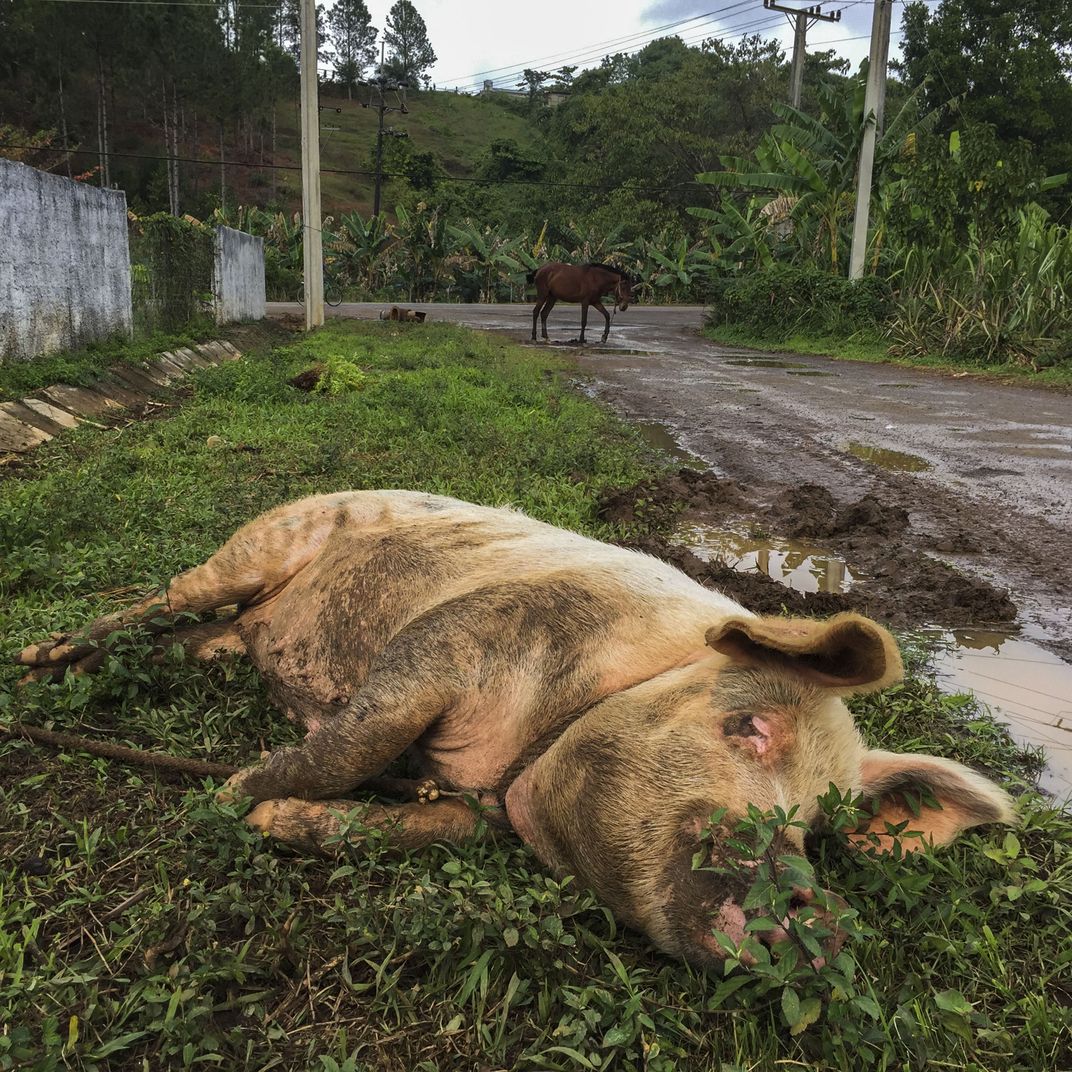
/https://tf-cmsv2-smithsonianmag-media.s3.amazonaws.com/filer/95/f5/95f58607-7325-492b-9954-3bedcdbb5bef/sqj_1610_cuba_essay_09.jpg)
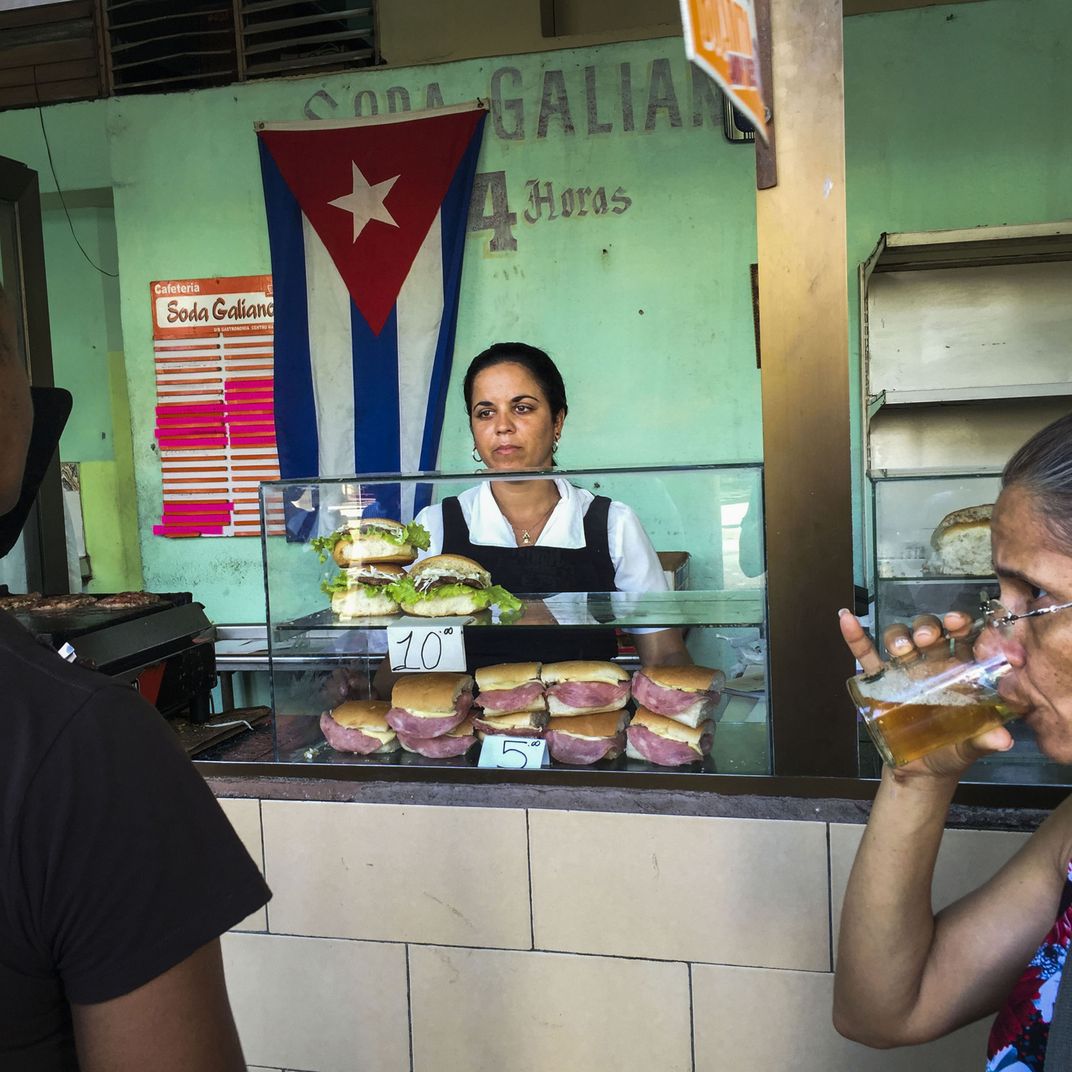
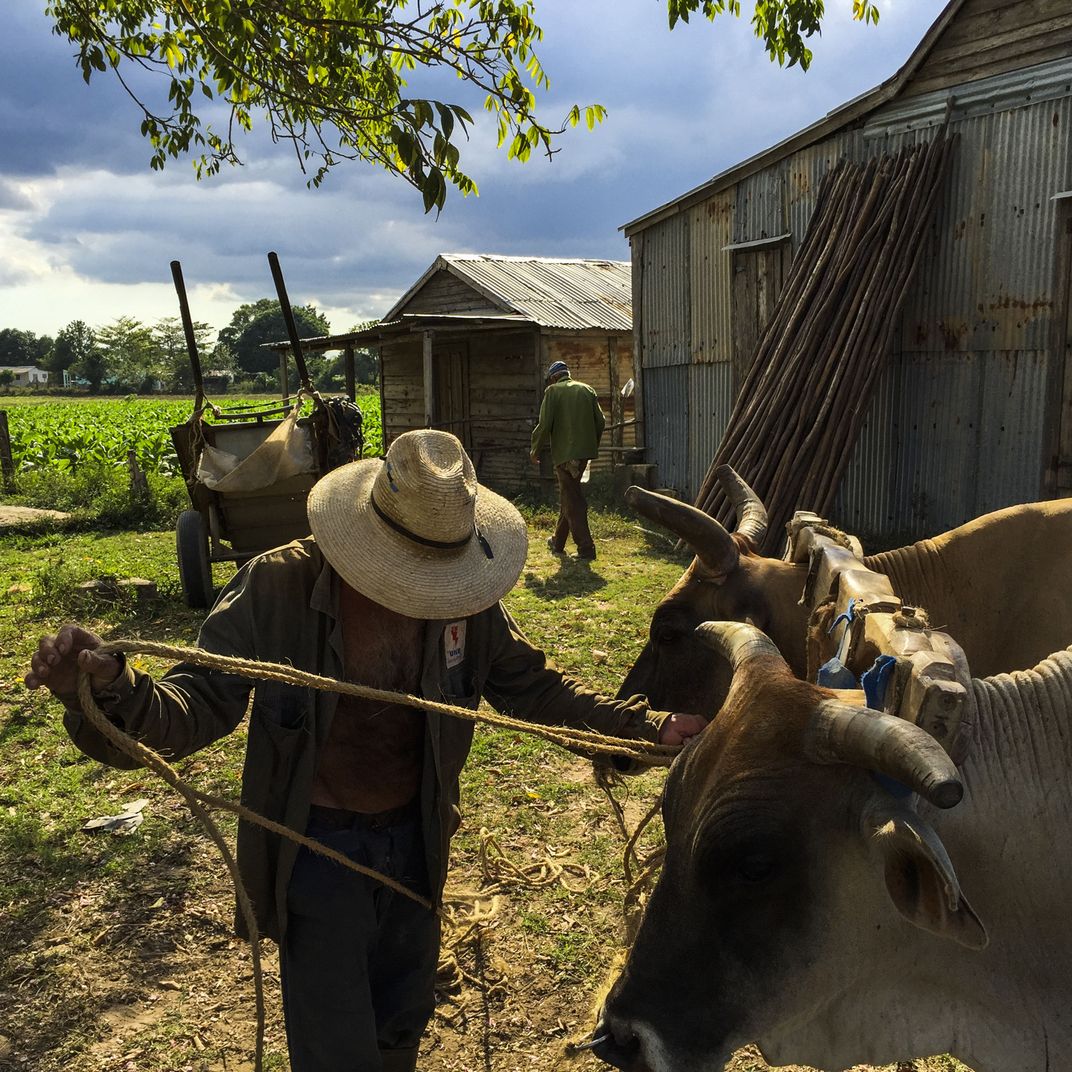
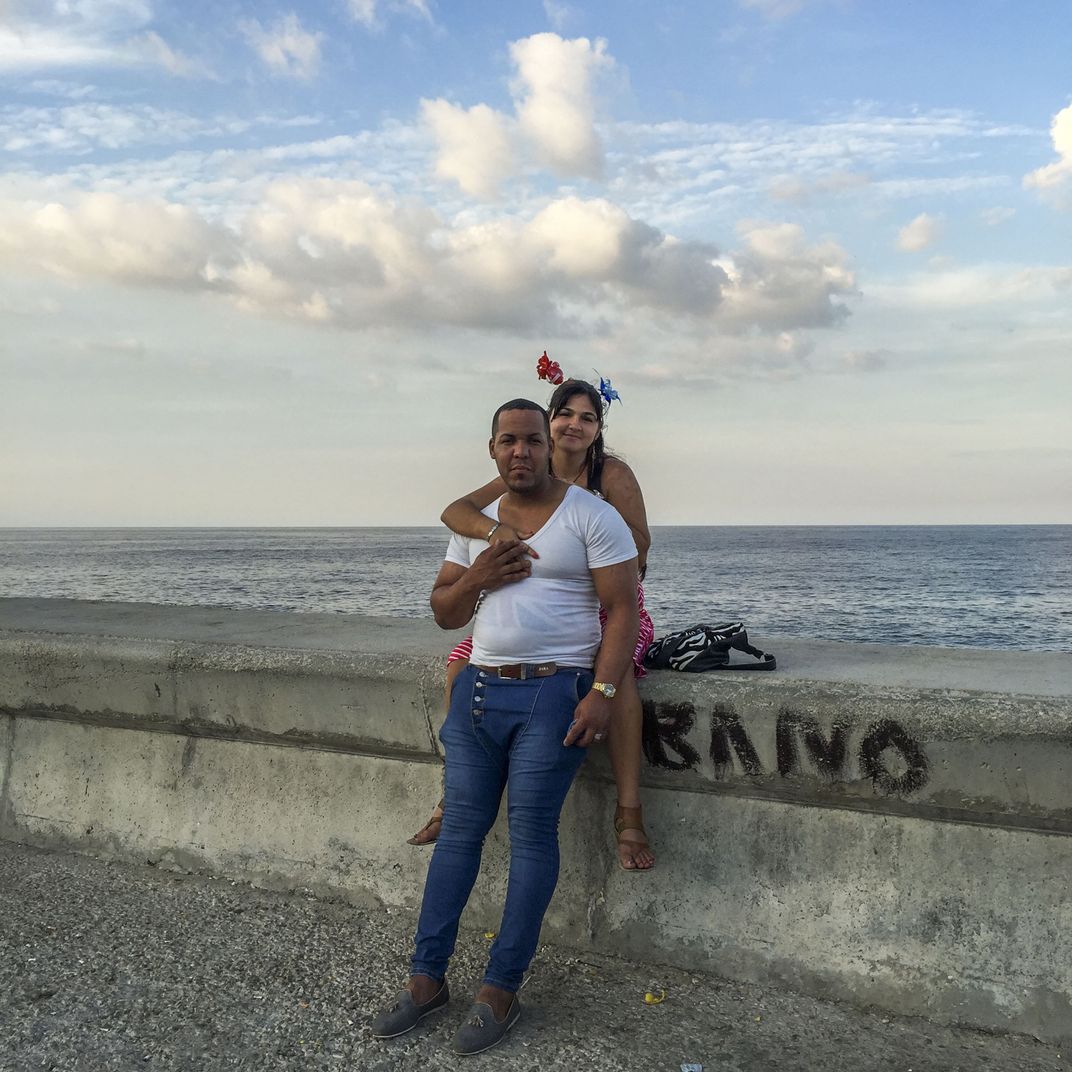
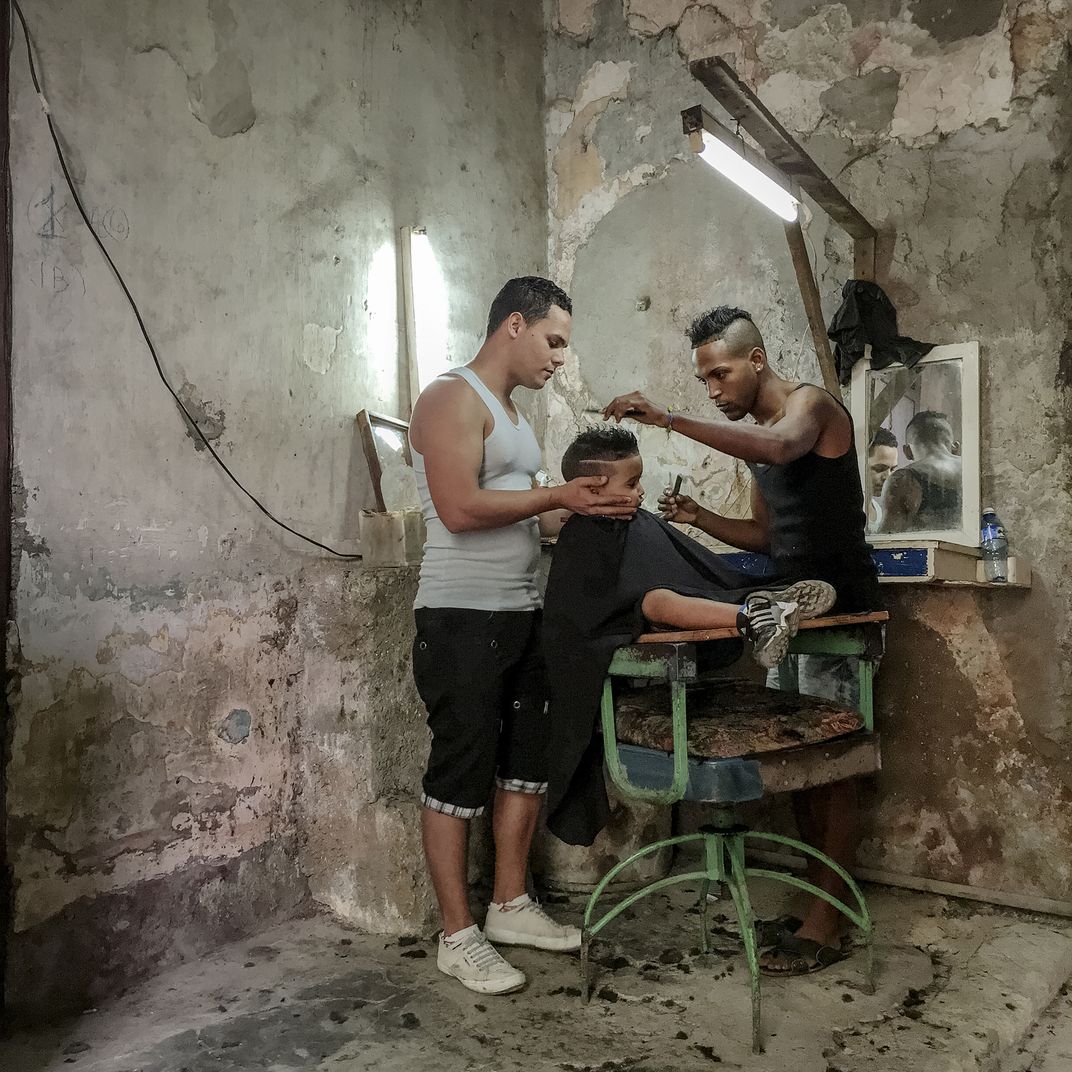
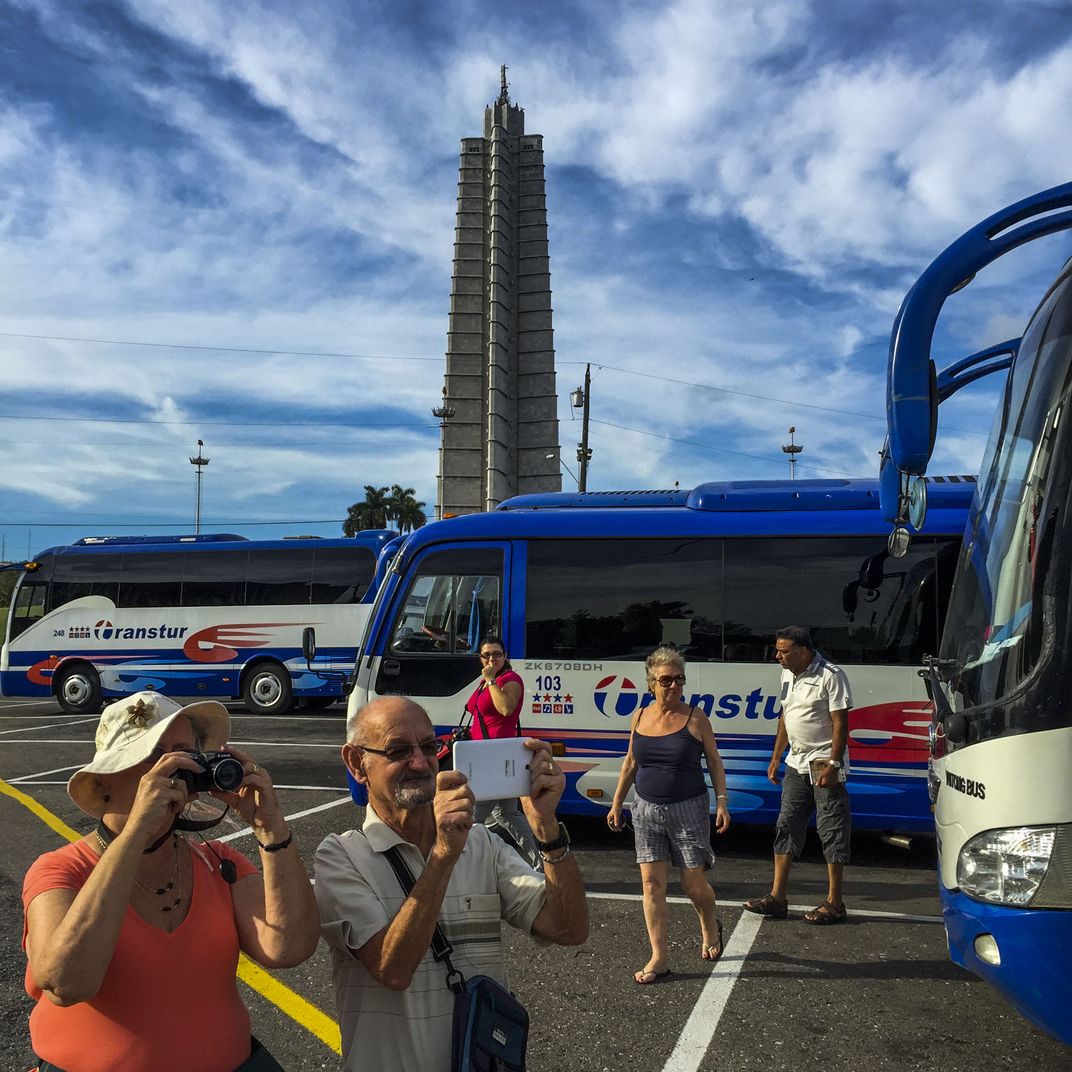
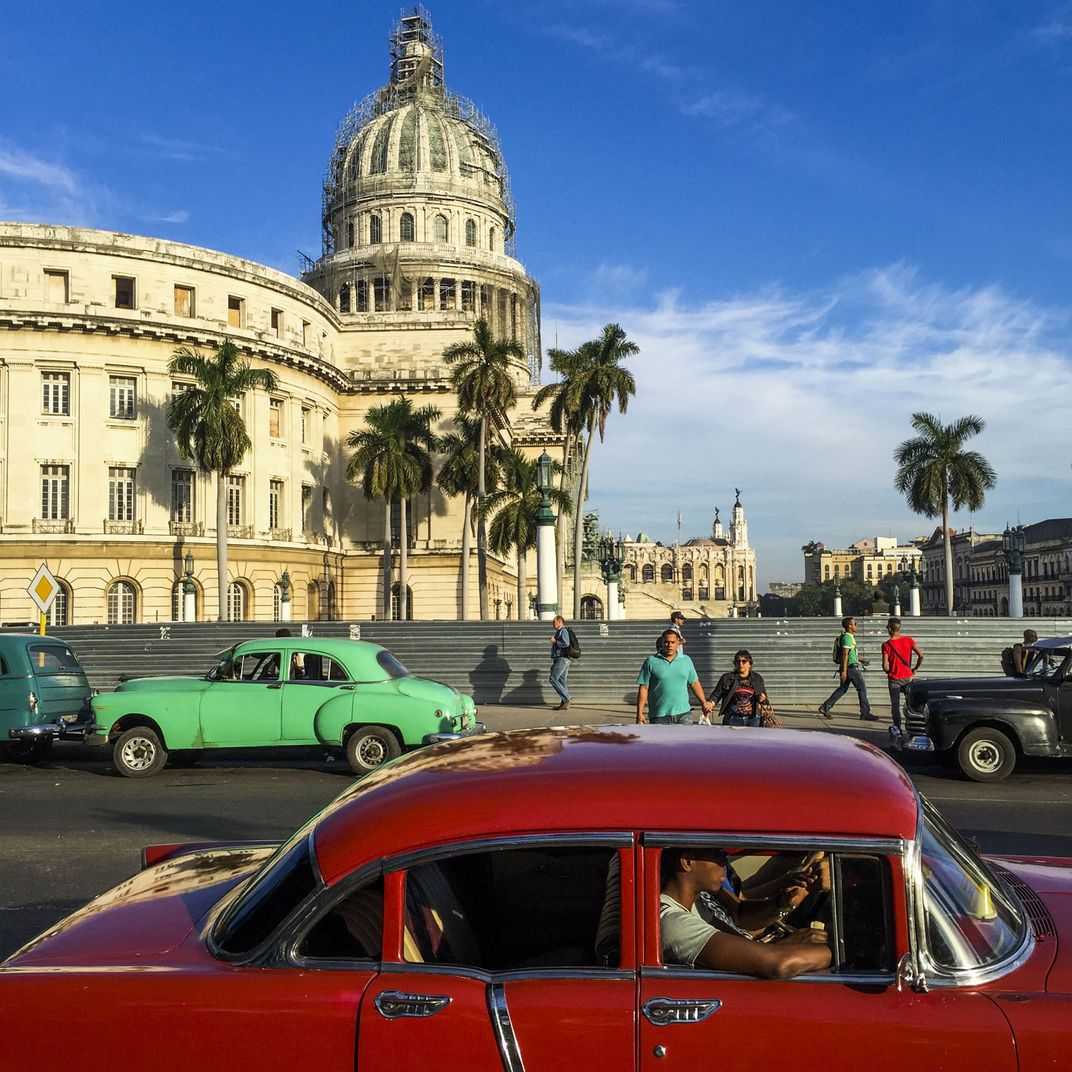
/https://tf-cmsv2-smithsonianmag-media.s3.amazonaws.com/filer/9d/19/9d19a073-abfd-454d-9144-33244385ed20/sqj_1610_cuba_essay_03.jpg)